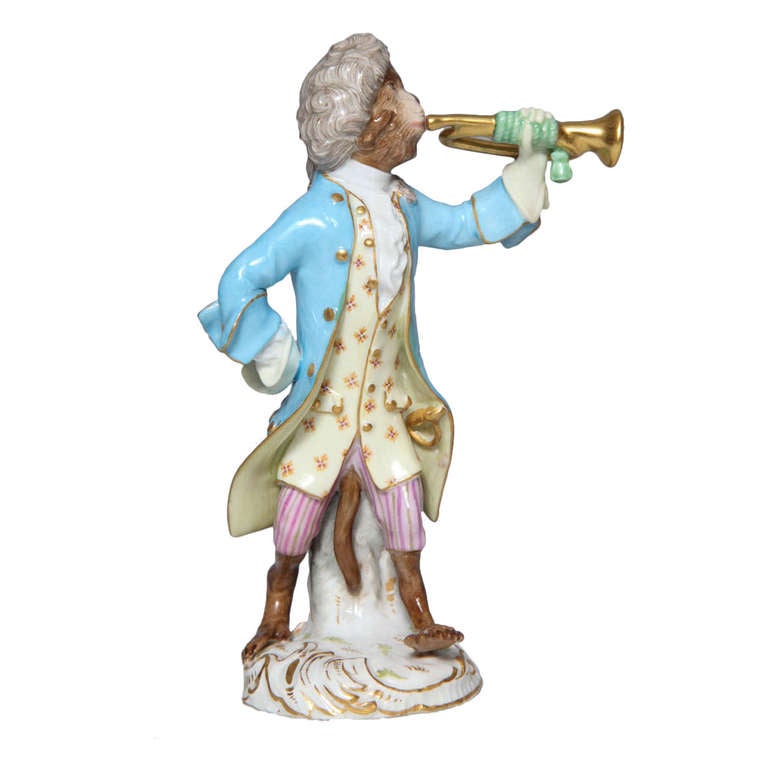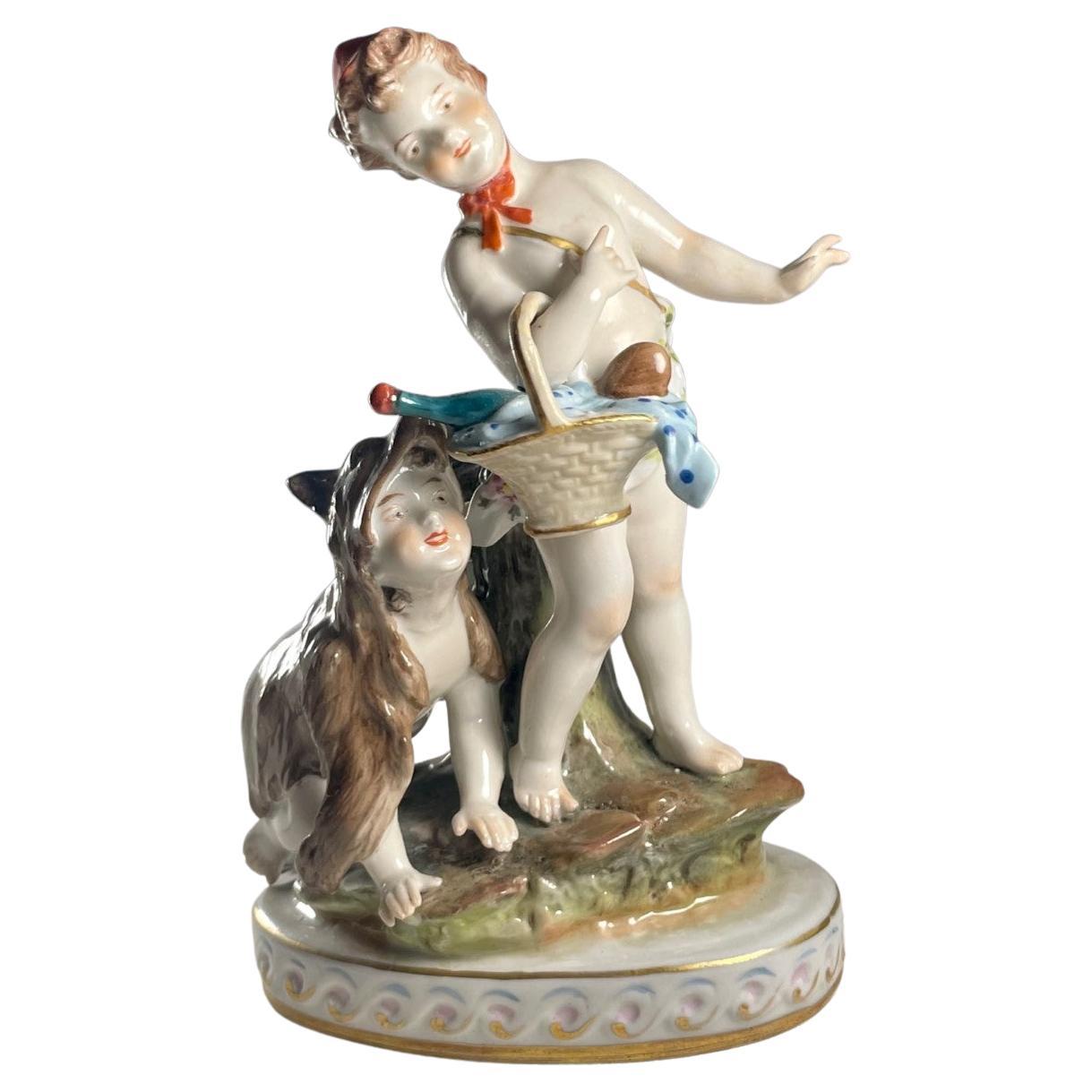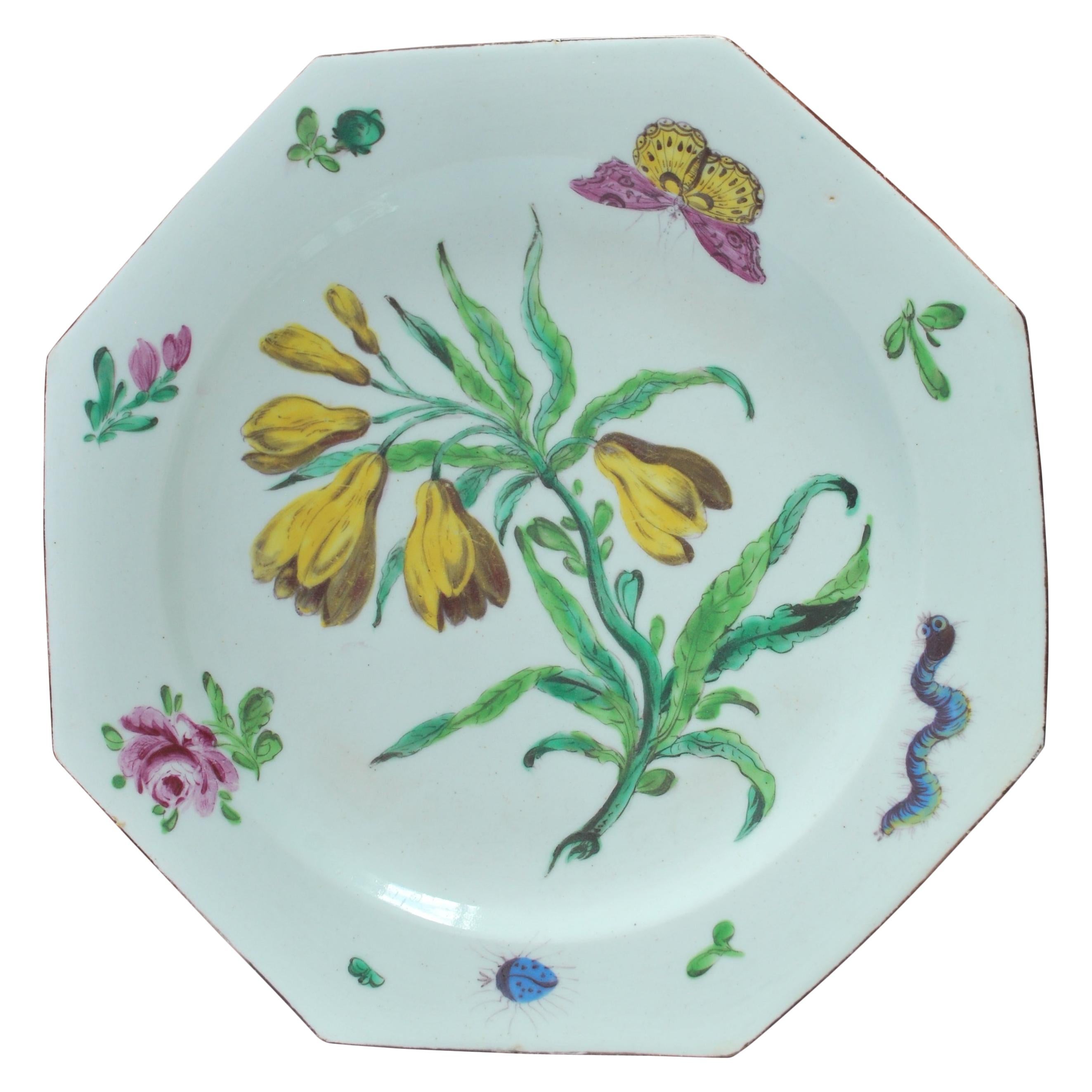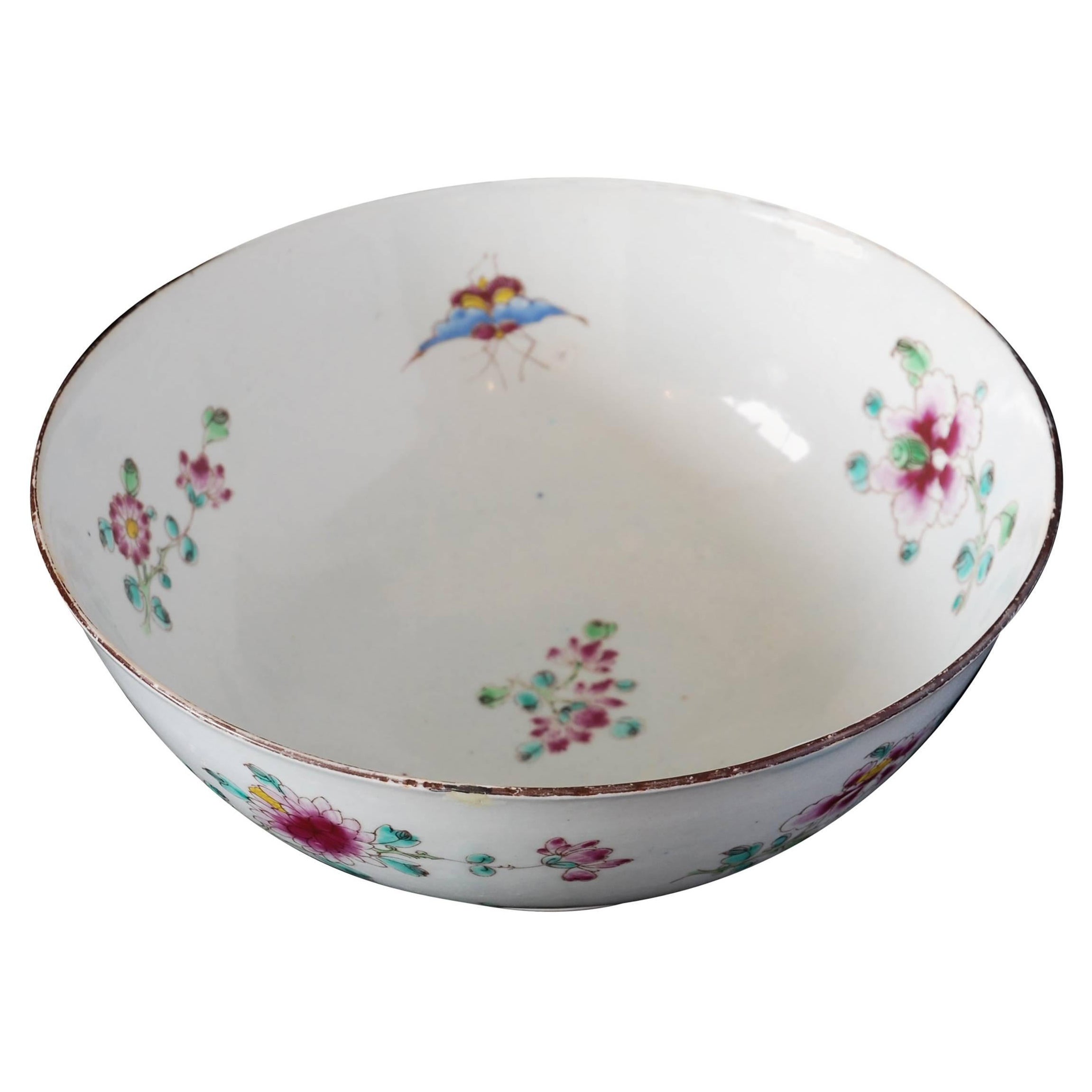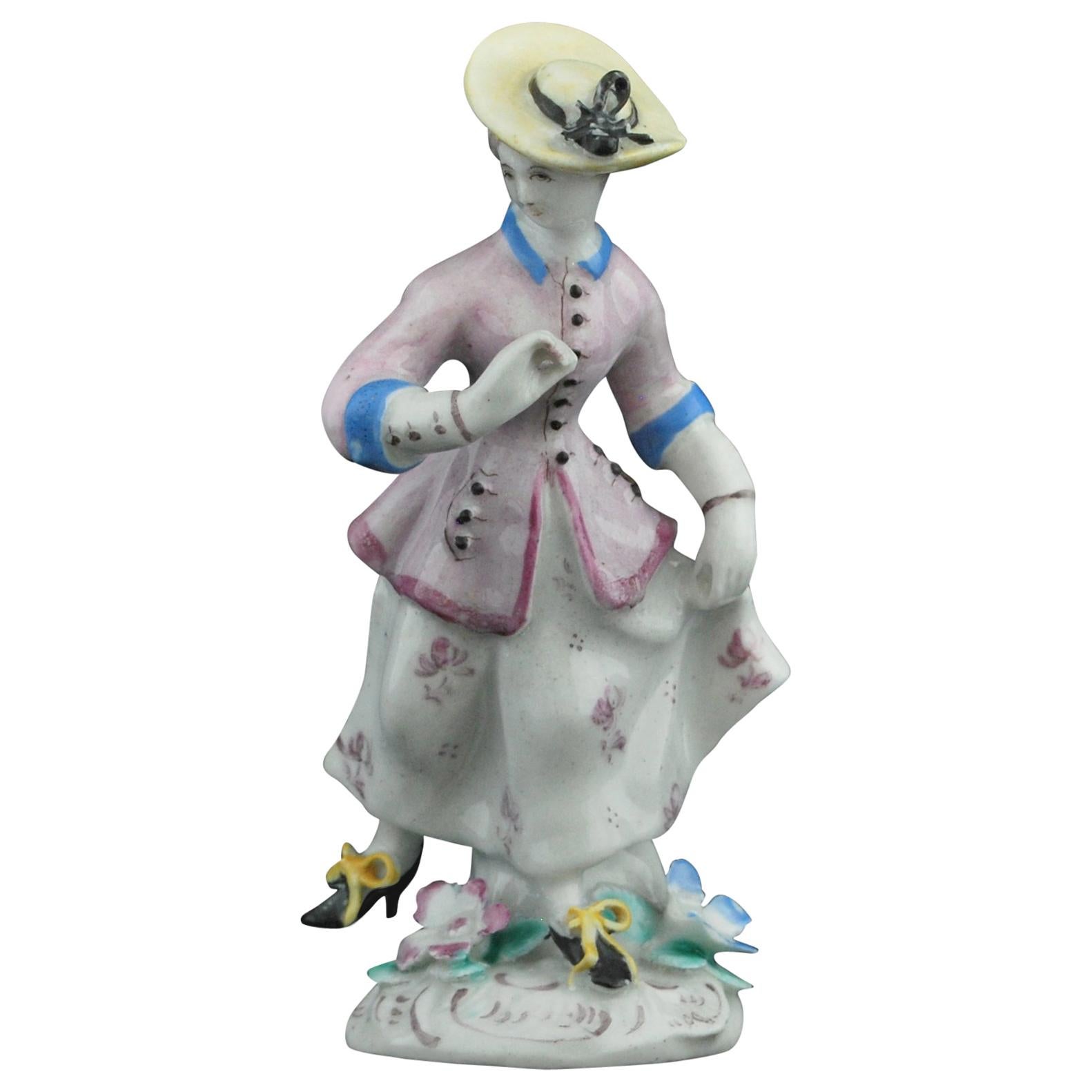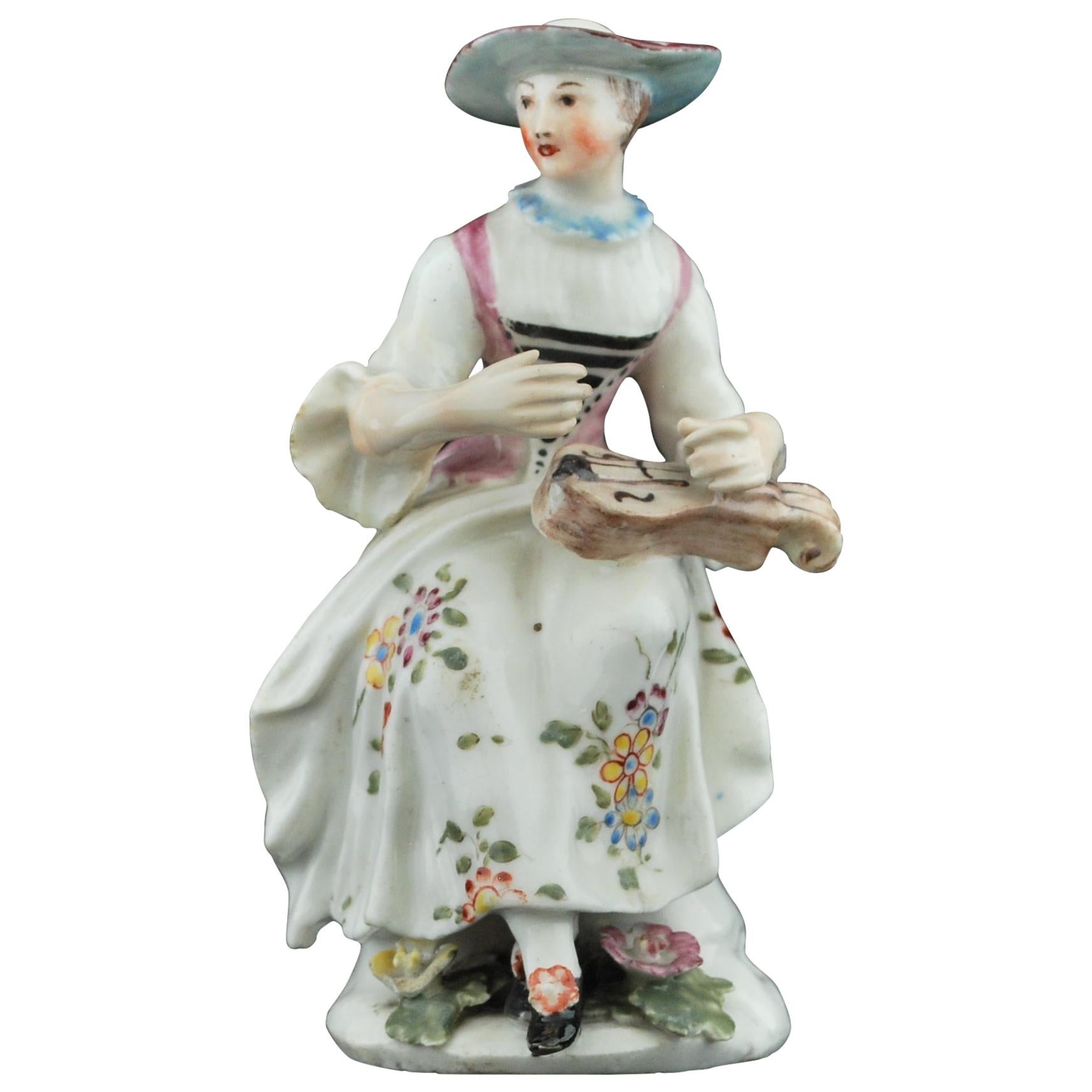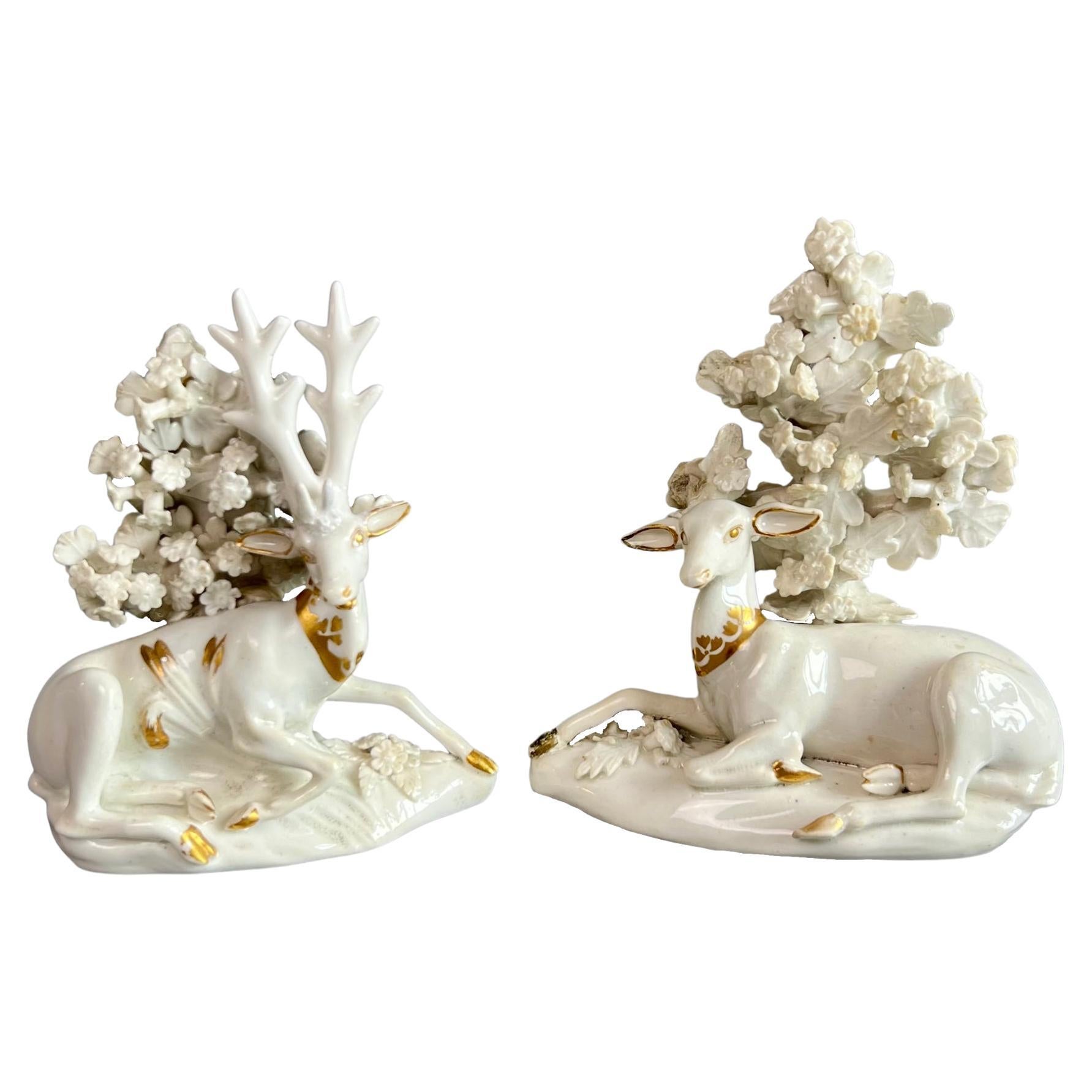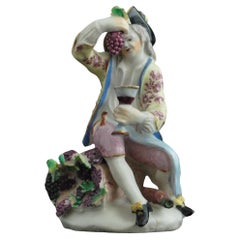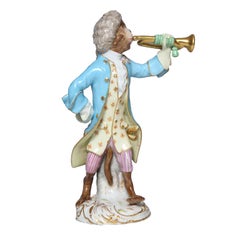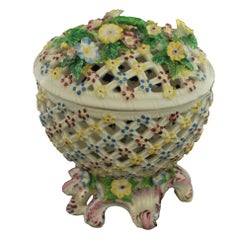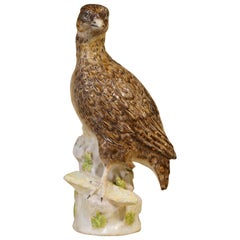
Early Berlin Porcelain Lifesize Quail, Wegely Period, circa 1755
View Similar Items
1 of 5
Early Berlin Porcelain Lifesize Quail, Wegely Period, circa 1755
About the Item
- Creator:Wegley (Manufacturer)
- Dimensions:Height: 6.3 in (16 cm)Width: 4.34 in (11 cm)Depth: 4.34 in (11 cm)
- Style:Rococo (Of the Period)
- Place of Origin:
- Period:1750-1759
- Date of Manufacture:circa 1755
- Condition:small repair to wheat, also tip of beak.
- Seller Location:Geelong, AU
- Reference Number:1stDibs: LU1250210735973
You May Also Like
- Autumn, Bow Porcelain Factory, circa 1755By Bow PorcelainLocated in Melbourne, VictoriaFrom a series of figures representing The Four Seasons, Autumn is shown as a young man squeezing grapes into a cup, symbolic of harvest time, and recalling classical representations ...Category
Antique Mid-18th Century English Neoclassical Porcelain
MaterialsPorcelain
- Early Meissen Porcelain, Singerie Style Monkey Musician FigurineBy Meissen PorcelainLocated in New York, NYAn early Meissen Porcelain Singerie style Monkey Musician Figurine. Dressed in full male noble attire and wig the monkey merrily plays the trumpet assu...Category
Antique 19th Century German Rococo Figurative Sculptures
MaterialsPorcelain
- Decorative Basket, Bow Porcelain Factory, circa 1760By Bow PorcelainLocated in Melbourne, VictoriaA pierced basket standing on a well-formed rococo base. Perhaps for potpourri, although the internal decoration suggests another use. We think probably oranges, chestnuts, etc. Pr...Category
Antique Mid-18th Century English Rococo Figurative Sculptures
MaterialsPorcelain
- Bow Porcelain Orphaned Coffee Cup, Famille Rose Peony, circa 1755By Bow PorcelainLocated in London, GBThis is a very charming orphaned coffee cup made by the Bow Porcelain factory in about 1755. The cup is decorated in a Chinese "famille rose" peony pattern. This cup would have been part of a large tea service, and the tiny size shows how expensive coffee was in the 18th Century. The Bow Porcelain Factory was one of the first potteries in Britain to make soft paste porcelain, and most probably the very first to use bone ash, which later got perfected by Josiah Spode to what is now the universally used "bone china". Bow was the main competitor of the Chelsea Porcelain Factory, but where Chelsea made very fine slipcast porcelain, Bow made a different soft paste porcelain that tended to be softer and could be pressed into moulds. Bow served a larger public generally at lower prices. The factory was only in operation between 1743 and 1774, after which the tradition got incorporated into some of the later famous potteries such as Worcester and Derby. The cup is unmarked, which is normal for Bow items of this era. Condition report the cup is in excellent condition without any damage or repairs. There are various glazing imperfections, which are quite normal for porcelain of this era. Antique British porcelain...Category
Antique 1750s English Rococo Tea Sets
MaterialsPorcelain
- Italian Early 20th Century Naples Polychrome Porcelain Sculptural GroupLocated in Vero Beach, FLItalian Early 20th century Naples Polychrome Porcelain Sculptural Group. Charming antique Italian Naples polychrome hand painted joyfully playing children in porcelain. The miniature sculpture is beautifully modeled with superb detail and exquisite workmanship. The very rare subject depicting two young children playfully enacting the red riding hood and the wolf fairy tale. The pair are mounted on a plinth with molded accents enhanced with gilding. Marked under the base with a crowned “N...Category
Early 20th Century Italian Rococo Porcelain
MaterialsPorcelain
- Botanical Plate, Bow Porcelain Factory, circa 1755By Bow PorcelainLocated in Melbourne, VictoriaA fine octagonal plate painted in the botanical style; possibly the yellow gloriosa climbing lily. Provenance: Taylor Collection; Robyn Robb 2003. Filled edge chips.Category
Antique Mid-18th Century English Neoclassical Porcelain
MaterialsPorcelain
Recently Viewed
View AllMore Ways To Browse
Feather Painted Porcelain
Summer Wheat
German Porcelain Figures Pair
Lifesize Animal
Model 1755
Lifesize Animal Sculpture
Pair Porcelain Bird Figures
Quail Decorative Object
Quail Sculptures
Gold Lion
Horse Decorative Objects
Horse Sculptures
Bronze Sculptures Of Animals
Mid Century Modern Glass Sculpture
With Glass Eyes
Large Decorative Animals
Vintage Hand Sculpture
Naturalistic Furniture

